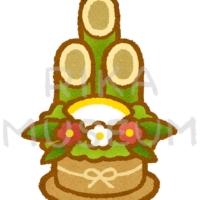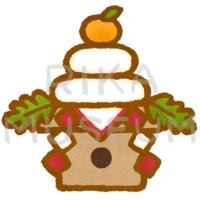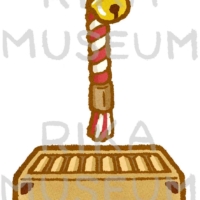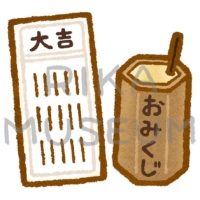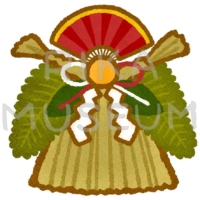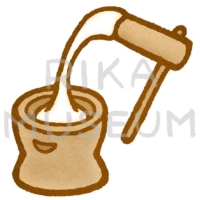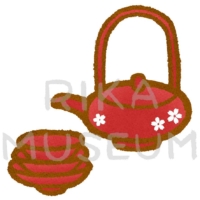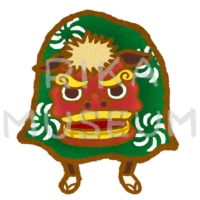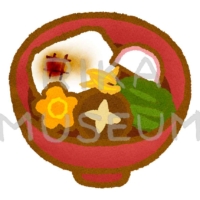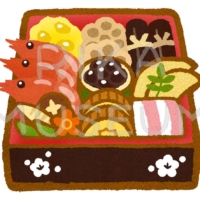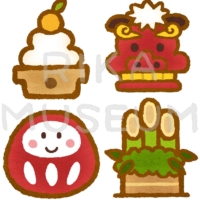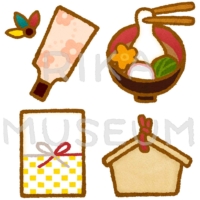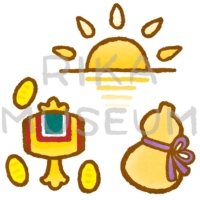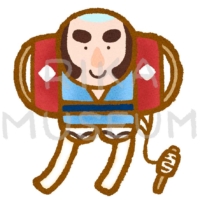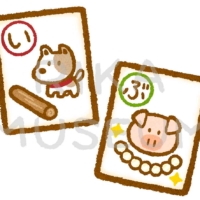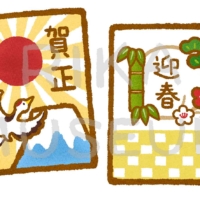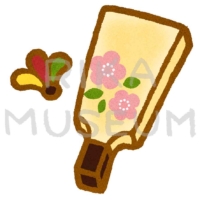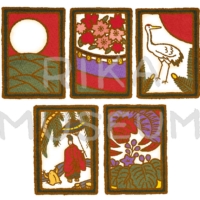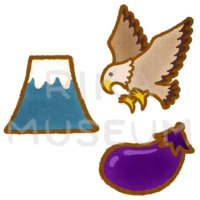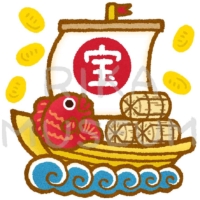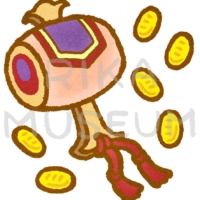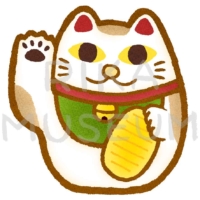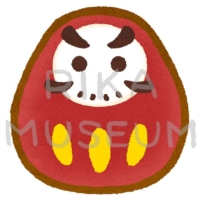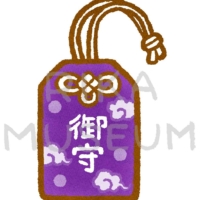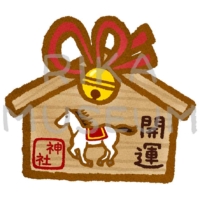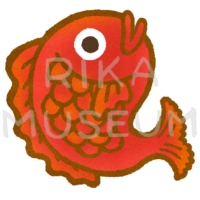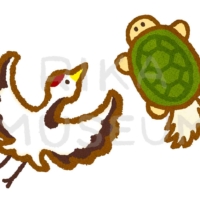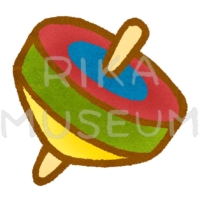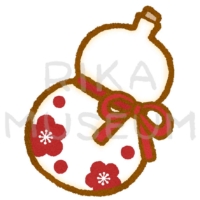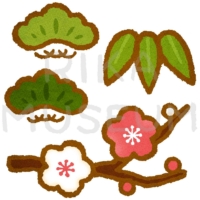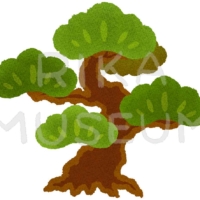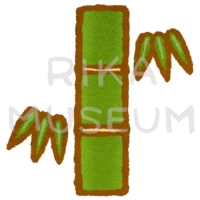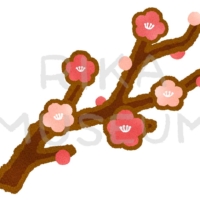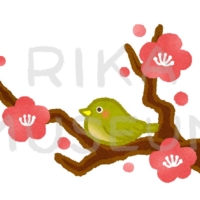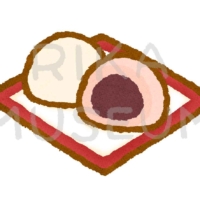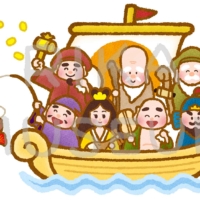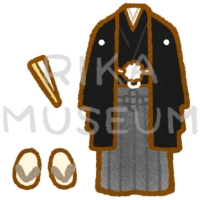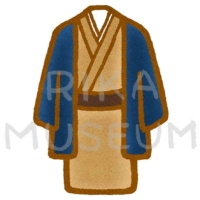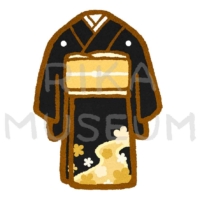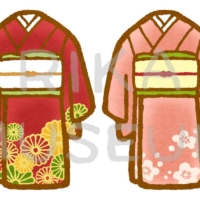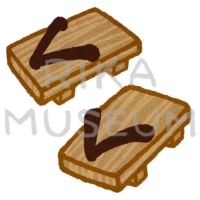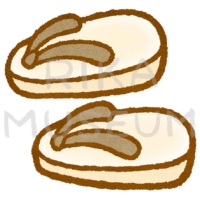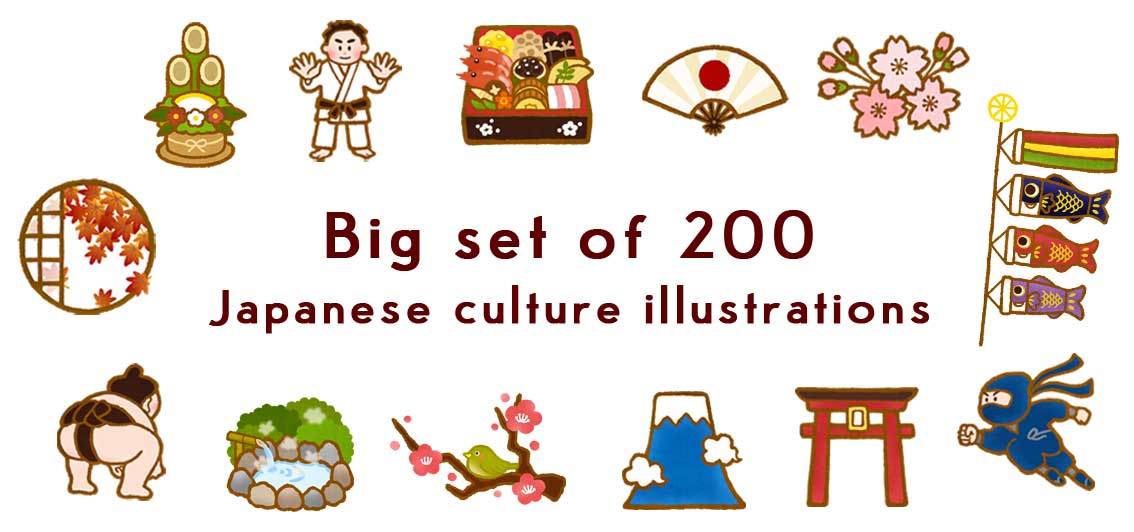
Thank you so much for your interest in RIKA‘s artwork.
You can buy and download many cute images and use them for your design.
I want everyone to know how wonderful Japanese culture is, and I hope my works will be helpful to your projects.
Free version of Japanese culture illustrations
Contents
The 200 illustrations are divided into 4 pages (the following ①–④).
① Kimono (traditional Japanese outfit)
② Japanese annual events 47–98
③ Shrine, temples, Japanese Mythology, traditional art, and hot spring 99–152
④ Ninja, samurai, and martial arts 153–200
Japanese New Year season
The New Year’s season is the most important holidays for the Japanese.
Many visit Buddhist temples or Shrines to pray for their happiness for the year.
- Kadomatsu is a decoration of pine branches and bamboo that is placed in front of the house or shops during the New Year’s holidays, and it is said that this is a traditional way to invite Toshigami (the Shinto deity).
- Kagami-mochi are round rice cakes with an orange on top offered to the gods.
- Hatsumoude is the event of visiting a shrine or temple for the first time since the start of a new year.
- Omikuji (Japanese sacred lot) is a fortune-telling paper strip at a shrine or temple.
- Shimekazari is a decoration of straw rope hung over the entrance to a house during the New Year’s holidays.
- Mochitsuki is made by pounding steamed rice to make rice cakes.
- Toso : New Year’s spiced sake
- Shishimai is a traditional Japanese performance in which an imaginary creature (lion was based) costume dances to festival music.
- Mochi : rice cake
- Zōni : Japanese New Year’s soup with rice cake, the seasoning and other ingredients vary regionally
- Osechi-ryori : New Year’s special dish: Each ingredient in osechi has meanings, such as good health, a good harvest, happiness, prosperity, long life, and so on.
- Tako is a flying kite made with paper glued to a bamboo frame, and pictures of warriors or Kabuki actors are drawn on the surface.
- Karuta : traditional Japanese playing cards
- Nengajo : New Year’s greeting cards.
- Hanetsuki is a traditional Japanese game similar to badminton that uses wooden boards called “hagoita” and a shuttlecock.
- Hanafuda : traditional Japanese playing cards
Lucky charm
In Japan, these items are believed auspicious.
- Mt. Fuji, taka, nasubi
It is said to be auspicious that one dreams Mt. Fuji, a hawk or an eggplant in the first night of the year. - Uchide-no-kozuch is a legendary mallet that can tap out anything wished for by shaking.
- Maneki-neko is an ornamental beckoning cat that is believed to draw visitors and customers.
- Daruma is a symbol of perseverance and reaching the objective, as it always returns to an upright position when tipped over.
- Omamori (a Japanese lucky charm) is available in a temple or shrine.
- Hamaya is a decorative arrow supposed to ward off evil.
- Ema is a wooden board with a picture of a horse on which people write their wishes. It is dedicated to a shrine or a temple.
- Tai
Many Japanese people eat sea bream at the New Year. “Sea bream” is “Tai” in Japanese. We associate it with another Japanese word, “medetai,” which means “auspicious.” - Tsuru (crane) and Kame (tortoise) are considered lucky animals in Japan.
- Hyotan
A gourd is considered a good luck item in Japan. - Sho-chiku-bai
In Japan, pine, bamboo and apricot trees are considered symbols of good luck and are called sho-chiku-bai for short. - Kouhaku-manju : Steamed buns with sweet red bean paste filling and celebratory Japanese sweets. It is said that the combination of red and white is auspicious in Japan.
- Shichifukujin, the Seven Gods of Good Fortune, are believed to arrive on a ship full of treasures and bring people good luck.
Kimono (traditional Japanese outfit)
・Kimono are traditional Japanese clothes made out of a roll of cloth. Today, Japanese people wear kimonos during the New Year and at important life events.
Formal Kimono for men imprinted with one’s crests on top.
・Tomesode is the prime ceremonial clothing for married women, with family crests at the top and a beautiful design at the bottom, worn ceremonially at happy occasions. They are regarded as kimonos of the highest rank and are worn on formal occasions.
② Japanese annual events 47–98
③ Shinto shrine, traditional art, and hot spring 99–152
④ Ninja, samurai, and martial arts 153–200
Images specifications
- Format:PNG
- Background : transparent
- Color profile : sRGB
- Resolution : 300ppi
- Basic canvas size : 15cm x 15cm (vary a little by illustration)
- Download files have no watermark.
- Please decompress the downloaded file before using it.
Price and payment method
- Price:1,900 JPY (set of 200)
- Total file size : 720MB
- Please note that the illustrations are NOT returnable or refundable after purchase.
- Payment method:Credit card via Stripe (https://stripe.com)
Usable currency: Stripe supports processing payments in 135+ currencies.
Available Credit cards:VISA, MasterCard, American Express, Diners Club International, DISCOVER
Your credit card details are encrypted and securely stored by Stripe and are never entered or stored in RIKA MUSEUM. - Before purchasing, please read Terms and Conditions, Privacy Policy and How to download the product, carefully.
Other products
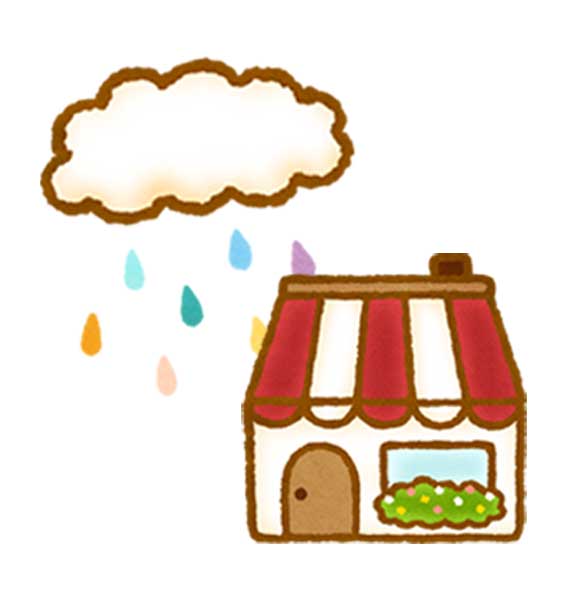
Daily life illustrations 300 (nature, weather, sea, food, flower, tree, house, furniture, travel, art, shopping, clothes)
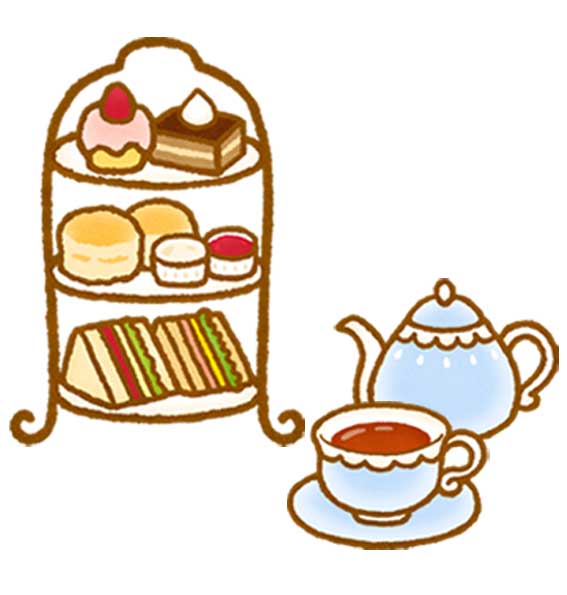
Brunch and sweets illustrations 220 (bread, sandwiches, bagel, quiche, bacon, eggs, cheese, cake, tart, doughnuts, ice cream)
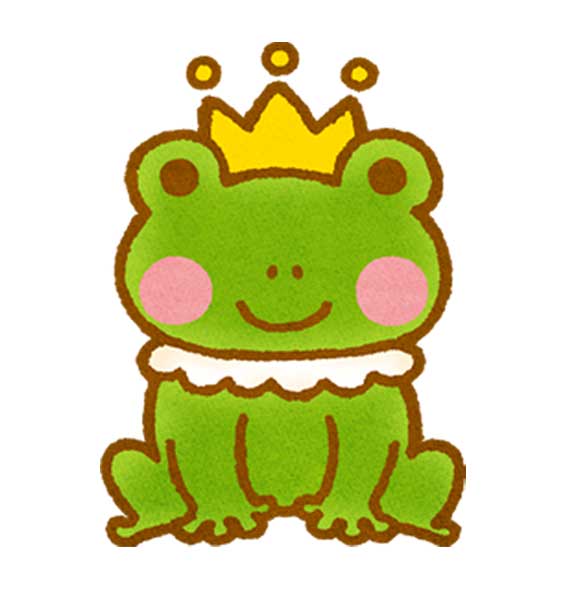
Fairy tale illustrations 300 (Red Riding Hood, Cinderella, Snow White, Sleeping beauty, The Frog Prince, The Three Little Pigs, Jack and The Beanstalk)
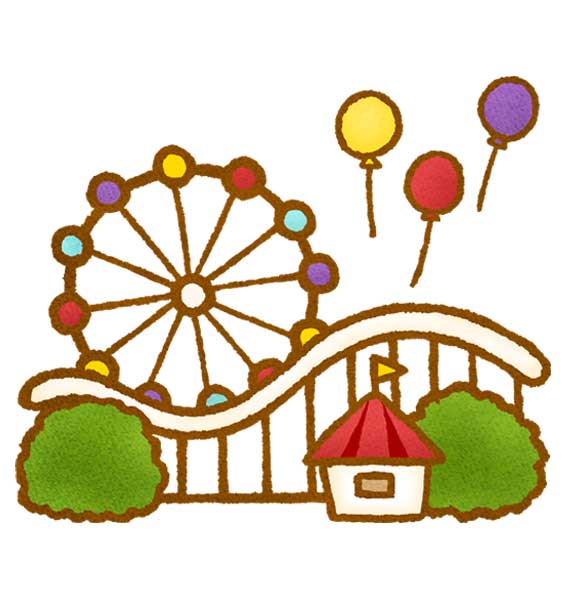
Amusement park illustrations 200 (ride attractions, circus, movie, magic, tickets, delicious-looking fast food, sweets)
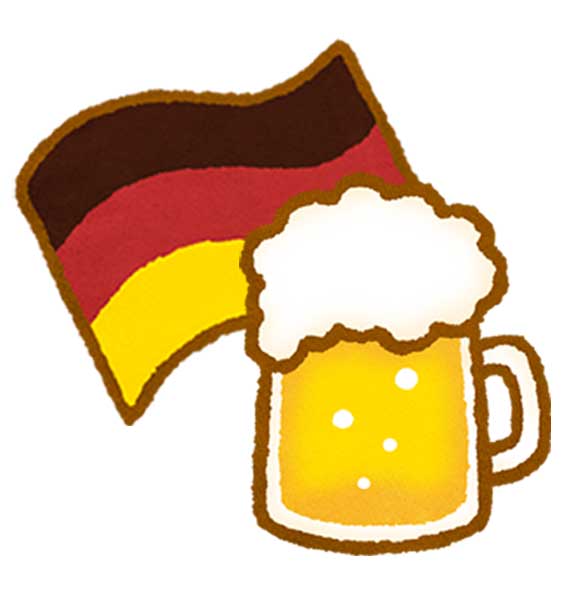
German culture illustrations 200 (beer, sausage, local dishes, wine, Oktoberfest, sweets, Neuschwanstein castle, famous historical buildings, great people related to Germany)
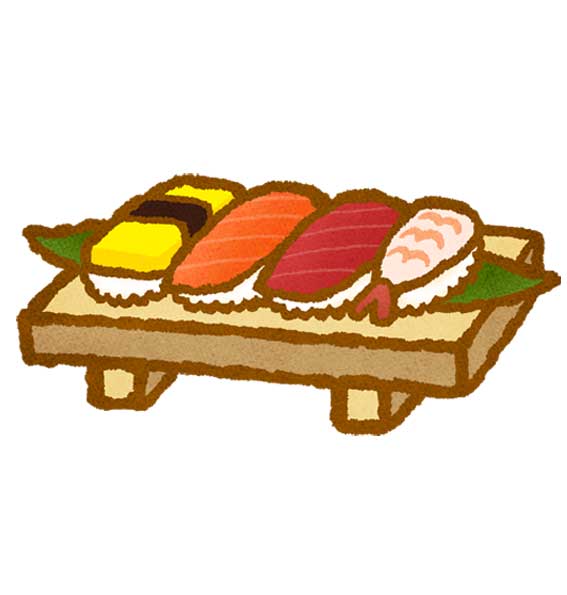
Japanese food illustrations 200 (sushi, tempura, sukiyaki, soba, udon, ramen, matcha sweets)

Crime suspense illustrations 200 (crime scene, criminal, police, detective, law court, prison)
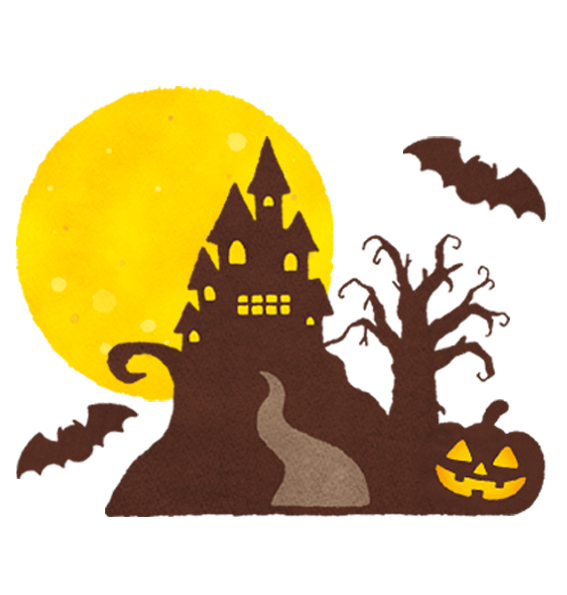
Halloween illustrations 200 (the Moon, jack-o’-lantern, ghost, haunted mansion, old tree, skull, crow, the Grim Reaper, Halloween sweets)
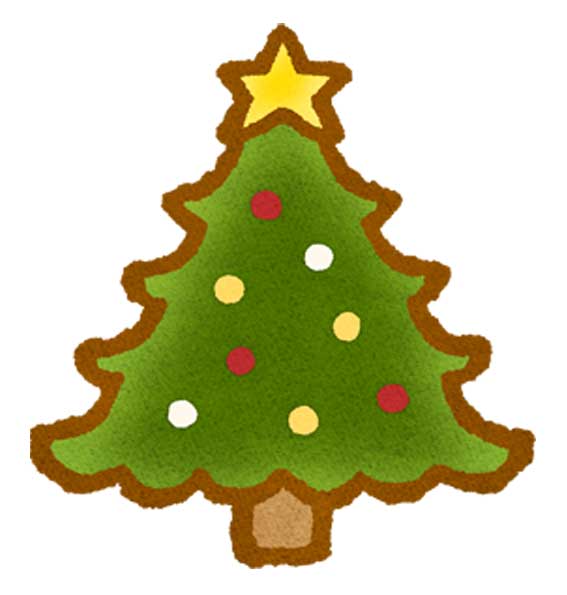
Christmas illustrations 200 (Santa Claus, reindeer, Christmas tree, sled, Christmas gifts, snowman, roast turkey, mulled wine, Stollen, Christmas cake)
Webbook (free)

My travel memoir of Southern Germany with many beautiful photos.
You can read it on this website.
Traveling in Southern Germany (written in Japanese)
